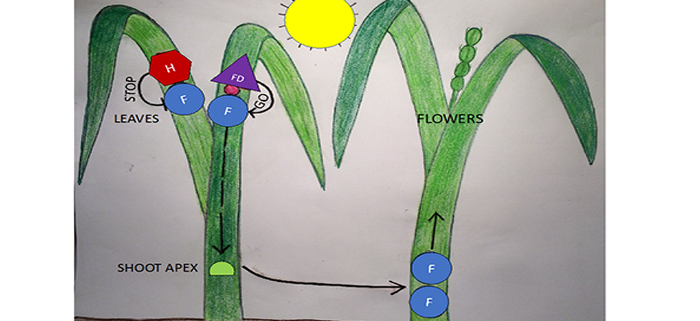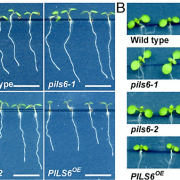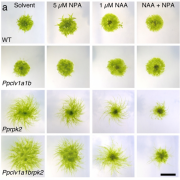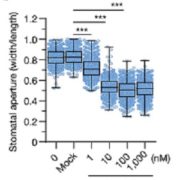How Signals in Plant Leaves Influence Flowering
Brambilla et al. describe antagonistic signals in rice leaves that control flowering https://doi.org/10.1105/tpc.17.00645
By Vittoria Brambilla
Background: A plant’s lifecycle is marked by a major switch occurring when the plant stops producing leaves and starts to make flowers. This switch is called floral transition and represents a major developmental change in many flowering plant species. It marks the beginning of reproduction, which ends when the seeds, the plant offspring, are ready for dispersal. The floral transition takes place at specific times of the year to provide the best chances for offspring survival. For this reason, leaves perceive specific environmental stimuli (for example the length of the day, or photoperiod) through a molecular network. The output is the production of molecular signals, dubbed florigens, that move through the leaf veins to reach the shoot apical meristem, a group of undifferentiated and reprogrammable cells producing leaves during vegetative growth, or flowers during reproductive growth. In rice two florigens have been described, whose function is to promote flower formation at the apex.
Question: We are interested in understanding if the rice florigens have also a role in regulating flowering induction in leaves.
Finding: We discovered that in leaves the two rice florigens can assemble into antagonistic transcription factor complexes that either promote or repress flowering. The positive complex contains a protein called OsFD1 (FD in the picture), that interacts with the florigens (F in the picture) to activate flowering. HBFs transcription factors (H in the picture), on the contrary, bind to the florigens (F) to repress flowering. Accordingly, rice plants with increased amounts of OsFD1 or decreased amounts of HBFs flower earlier than the wild type, while plants with increased amounts of HBFs flower later. This OsFD1–HBF balance and their binding to the florigens represent a previously unknown mechanism to fine tune flowering in rice leaves.
Next steps: We now aim to understand which environmental stimuli influence OsFD1 and HBF abundance in leaves and what upstream regulator can induce or repress flowering through this new pathway.
Brambilla, V., Martignago, D., Goretti, D., Cerise, M., Somssich, M., de Rosa, M., Galbiati, F., Shrestha, R., Lazzaro, F., Simon, R., and Fornara, F. (2017). Antagonistic Transcription Factor Complexes Modulate the Floral Transition in Rice. Plant Cell https://doi.org/10.1105/tpc.17.00645










